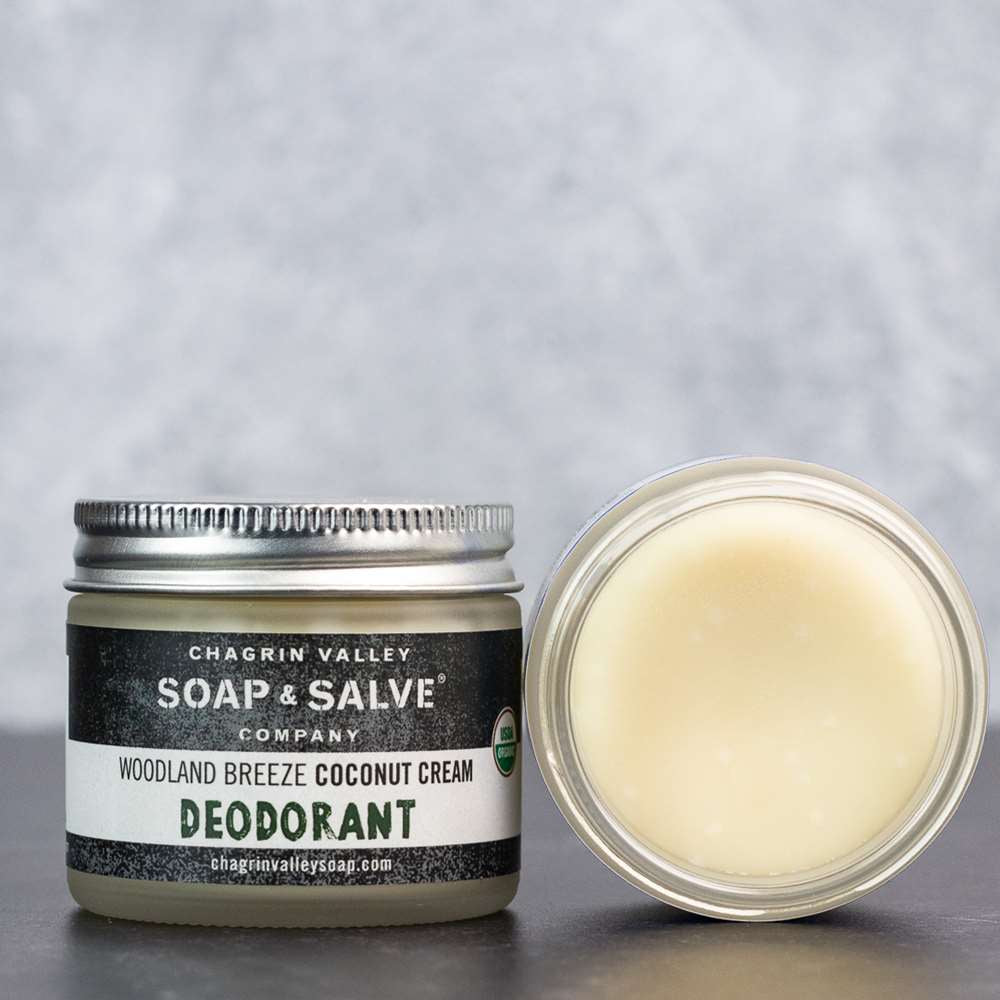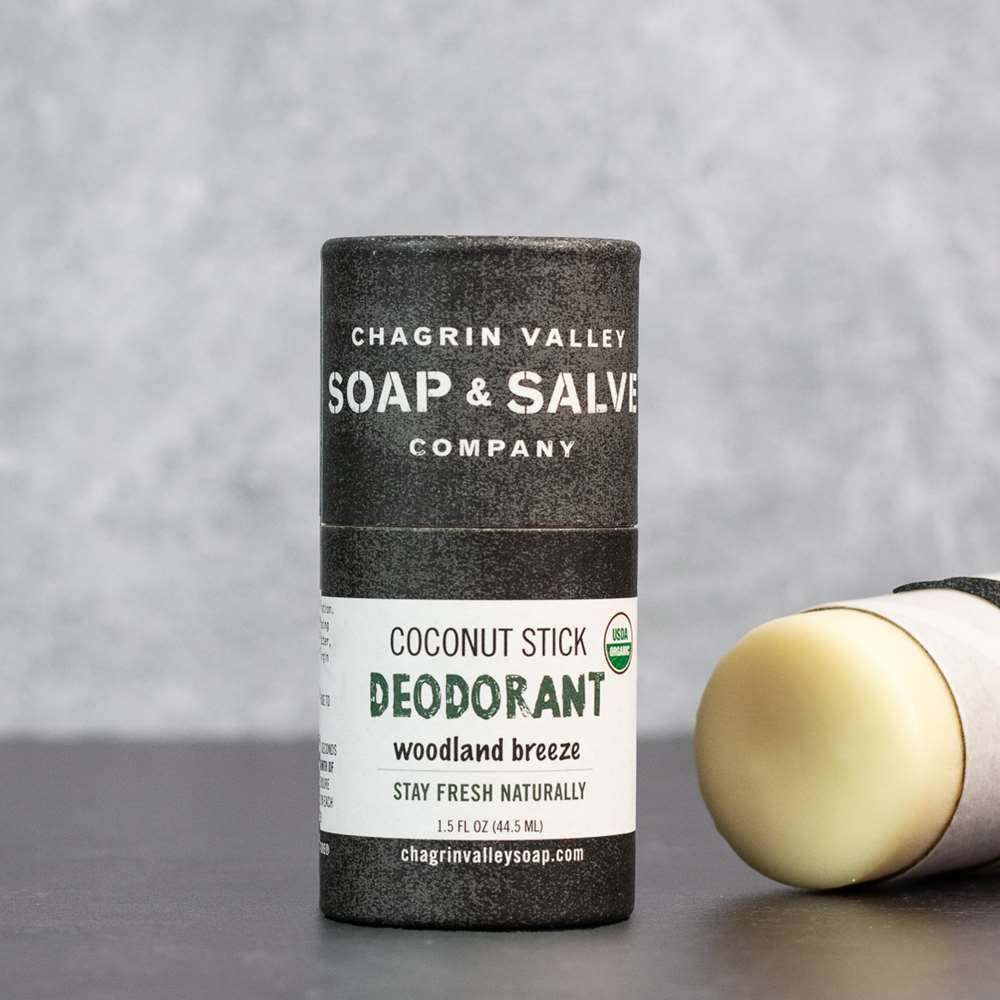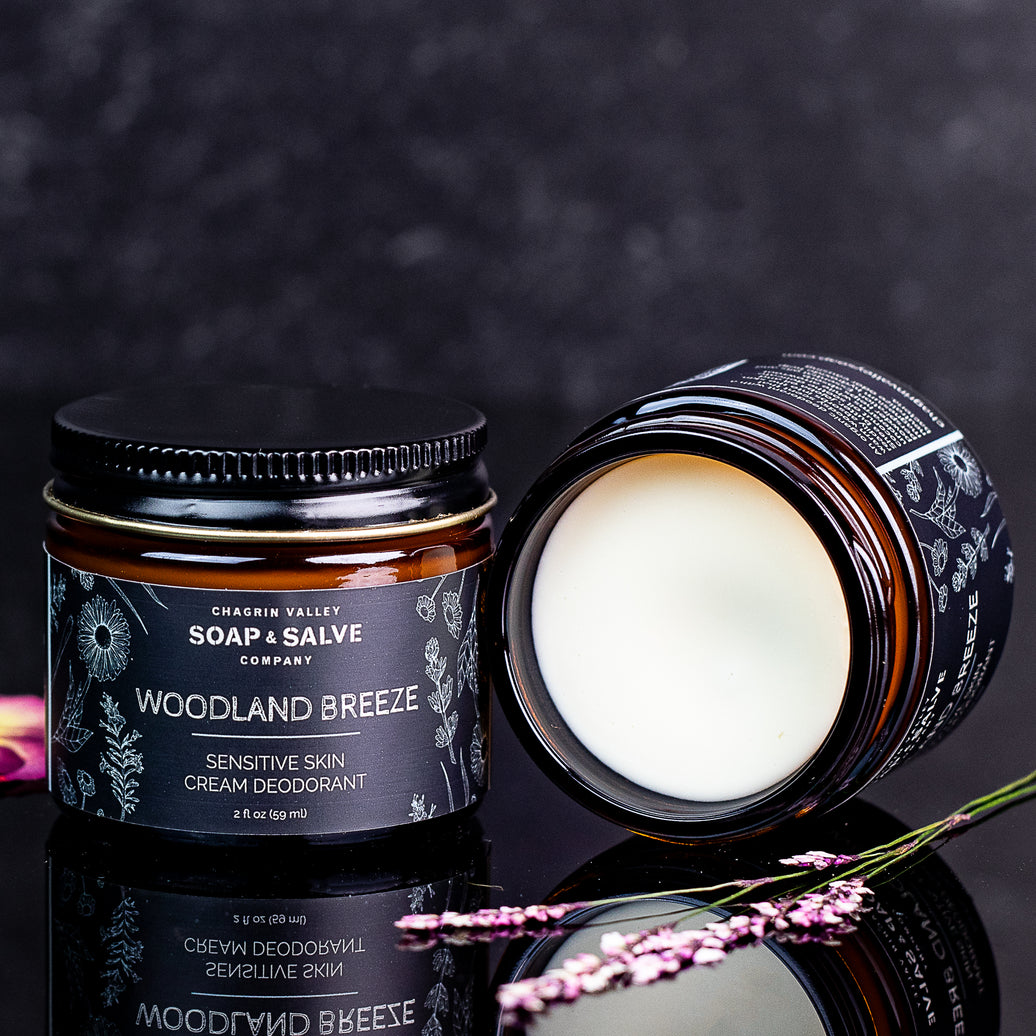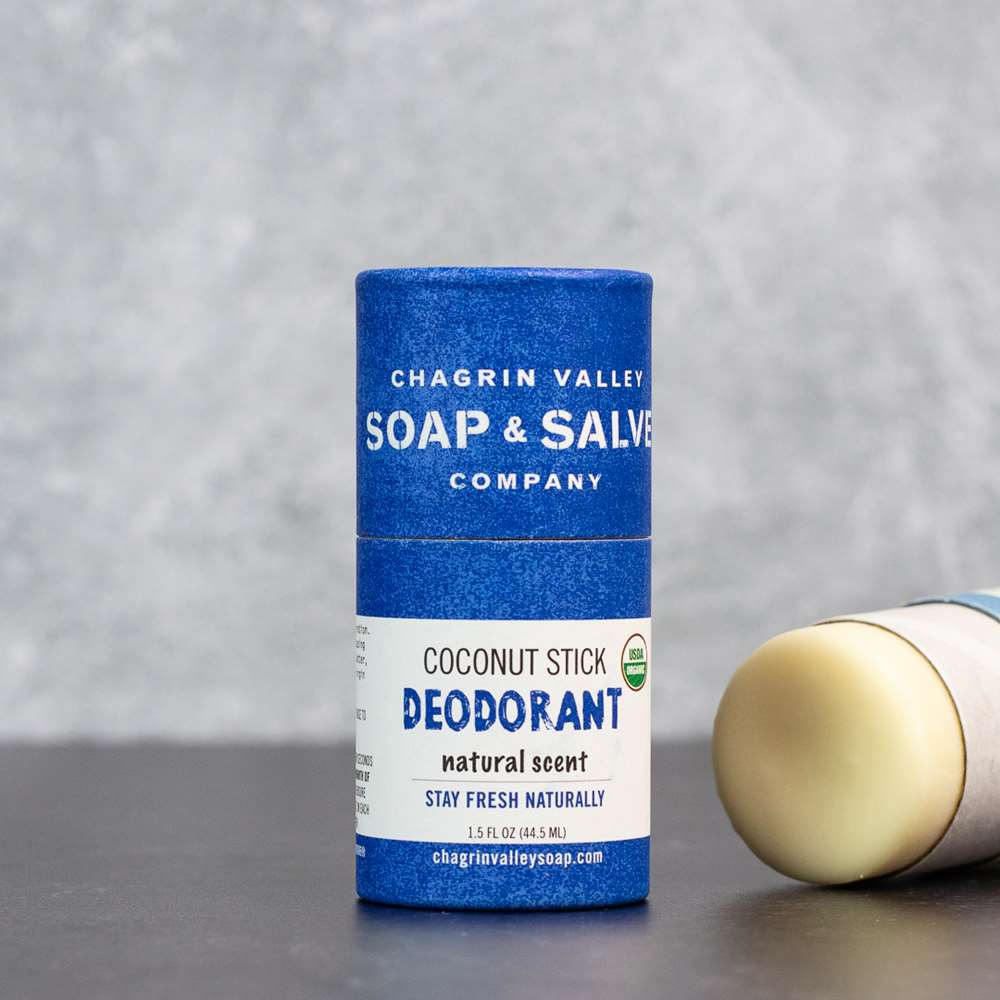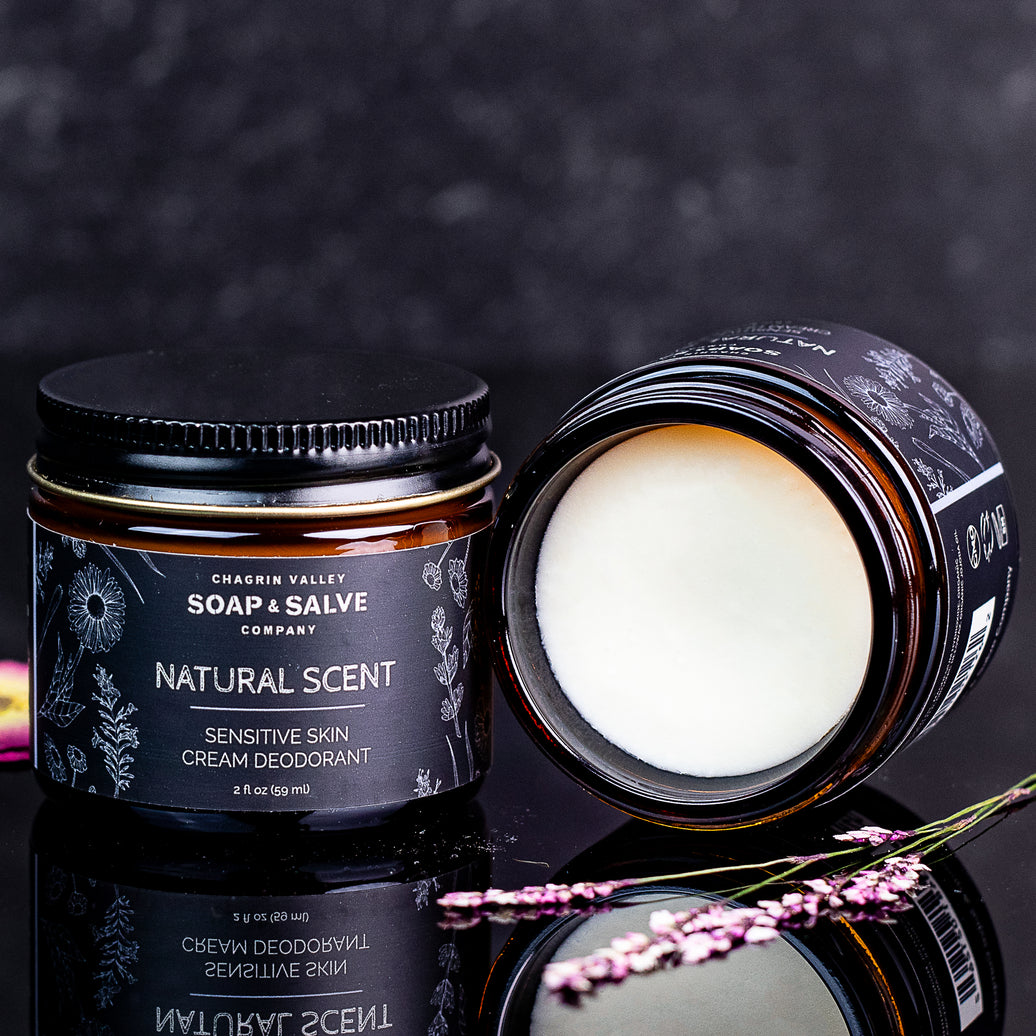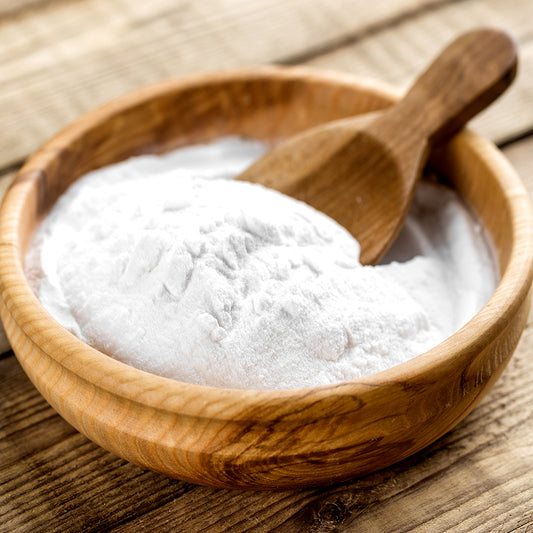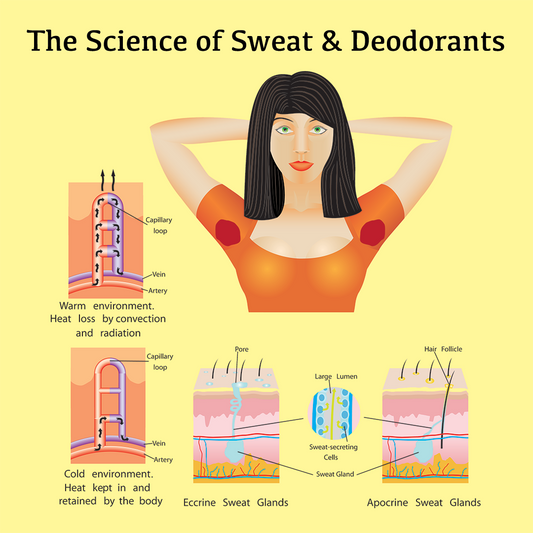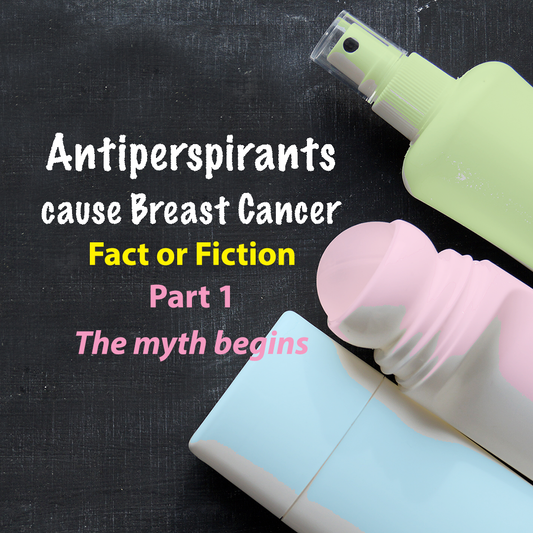Why Use A Natural Deodorant & How It Works
A Brief History of Deodorant
 In many ancient societies, body odor was not considered offensive. Others, like the Romans, were constantly bathing and saturating themselves and their clothing with perfume. Some would carry sachets filled with aromatic herbs to help combat odor.
In many ancient societies, body odor was not considered offensive. Others, like the Romans, were constantly bathing and saturating themselves and their clothing with perfume. Some would carry sachets filled with aromatic herbs to help combat odor.
Greek poet Homer said that good hosts should offer their guests baths with aromatic oils. Maybe we could start a new trend!!
"Mum," the first trademarked deodorant, was created in Philadelphia by an unknown inventor, in 1888. It was a jar of waxy paste cream applied to the underarms made with zinc oxide, which was minimally effective at inhibiting the growth of bacteria.
Magazines ads, like the one pictured from the 1930s, cautioned women that if they did not use Mum deodorant, they would become social outcasts. The ad contains the following words:
“…men sidestep her. The other girls ignore her. For the best reason in the world! It is unpardonable, these days, for any girl to carry the odor of underarm perspiration on her person and her clothing…Don’t risk letting this fault shut you out of popularity.” (Smithsonianmag.com)
The first Antiperspirant, EverDry, was introduced in 1903. EverDry, which contained an aluminum chloride solution that was applied with a cotton swab, was so acidic that it actually ate through clothing and damaged the skin. In the 1940s a chemist named Jules Montenier filed a patent for a buffered antiperspirant which helped propel aluminum-based antiperspirants into mainstream personal care. In the 1950s the manufacturers of MUM invented Ban, a deodorant with a roll-on applicator inspired by the ball-point pen.
In the early 1950s, two physicians presented evidence for the role that bacteria played in underarm odor. At that time many manufacturers began using hexachlorophene, a powerful antimicrobial agent, in their deodorants and body soaps. In 1972, the U.S. Food and Drug Administration (FDA) banned the use of products containing more than 1% of hexachlorophene for the general public after reports of deaths in the United States and France from brain damage caused by hexachlorophene.
In the early 1970s many deodorant companies began using Triclosan to kill odor-causing bacteria. We now believe that the widespread use of Triclosan may also be promoting drug-resistant bacteria. Triclosan, extremely toxic to aquatic wildlife, has been detected in many U.S. waterways. In 2012 the Canadian government declared triclosan toxic to the environment. On September 9, 2016, the United States Food and Drug Administration (FDA) banned the use of triclosan and 18 other antimicrobial chemicals in soap.
Also in the 1960s, the Gillette Company introduced Right Guard, the first aerosol antiperspirant. In the late 1970s, countries began banning aerosol sprays containing chlorofluorocarbons as the propelling agent.
I hope you noticed in the above description of the evolution of antiperspirants and deodorants one common theme that is true even today: an ingredient works, we think it is safe, and then we discover it is not. Aluminum chloride, hexachlorophene, triclosan, chlorofluorocarbons--what's next? As we develop more and more synthetic ingredients the list only continues to grow.
We Want to Change the Way You Think About Deodorant!
Using deodorant for most people today is as important to their daily routine as brushing their teeth. We have been programmed to believe that strong chemicals are needed to stay dry and odor-free, sweating is bad, and the ingredients do not really matter as long as they get the job done.
The struggle to find a "truly natural" deodorant that actually works for YOU can be quite frustrating. It has been a struggle for me since I was a teenager.
 I was very sensitive to commercial deodorants and antiperspirants. They made me itch, gave me rashes, and generally irritated my skin. I finally decided that my body was trying to tell me something so I stopped using them.
I was very sensitive to commercial deodorants and antiperspirants. They made me itch, gave me rashes, and generally irritated my skin. I finally decided that my body was trying to tell me something so I stopped using them.
There were no natural deodorants in those days so I used rubbing alcohol and baby powder. While I now shudder at the thought, it was somewhat effective.
As I got older I was able to tolerate a few commercial products, but after recovering from breast cancer I decided to give up the chemical-laden deodorants.
Yes, I will admit that all of the misguided scare tactics about the links between breast cancer and antiperspirant deodorants worked. I tried many of the "more natural" deodorants that were available. They were not only ineffective, they also irritated my skin and many still contained questionable ingredients.
Since deodorants are formulated to be used daily and some ingredient components may be absorbed into the skin, I was determined to formulate a safe, effective natural organic deodorant.
As always, it is important to consider environmental impact. All of our deodorant are available in plastic-free packaging. Our Extra Strength and Sensitive Skin cream deodorants are packaged in recyclable glass with a recyclable metal lid. Our deodorant stick is packaged in recyclable, biodegradable, paperboard tubes with FSC certification. Zero-Waste and Plastic-Free!
Our natural deodorants are also aluminum free, paraben free, synthetic-free, artificial fragrance-free, UDSA organic, and sustainable.
The Science Behind Our Natural Deodorants
If you are regular reader of our Chagrin Valley blogs, you already know that I (Ida) am a proud science nerd.
If you read the blog "The Science of Sweat & Deodorant" you know that sweat itself is almost odorless, it is the bacteria feeding on the sweat that causes the odor.
So now I had a problem to solve. How to use science while harnessing the power of nature to create a gentle, safe natural deodorant using only the few ingredients needed to feel good on your skin and fight off odor-causing bacteria to keep you feeling fresh and smelling clean.
It took about a year of researching, experimenting, and testing on friends and family. Along the way we realized that while the science behind each ingredient was important, no two people have the same body chemistry.
So we created three different deodorant formulas. Two of them, the Extra Strength Cream, Regular Strength Stick are made with different amounts of baking soda. Our Sensitive Skin Cream Deodorants are baking soda-free and made with magnesium hydroxide.
Our three deodorant formulas use simple ingredients to help combat odor and absorb perspiration.
Our Natural Deodorant Ingredients
Every ingredient has a purpose. We have always believed that only a few simple, gentle, safe, and effective ingredients are needed to create any personal care product. Our deodorants are no exception. Our ingredients harness the power of nature and work together to help protect against odor while maintaining the health of underarm skin.
- Baking Soda or Magnesium Hydroxide neutralize odor and help absorb moisture.
- Plant-based powders like organic arrowroot, tapioca or cornstarch soothe skin and absorb perspiration.
- Organic Virgin Coconut Oil is a base ingredient in all of our deodorants. It not only moisturizes delicate skin but also contains natural antimicrobials to help combat odor.
- Organic Shea Butter and Plant Oils create a silky smooth application while moisturizing, soothing, and nourishing underarm skin.
- Organic Essential Oils take the place of synthetic fragrances to provide a pleasant scent and many have their own antimicrobial benefits.
An aluminum free, paraben free, synthetic-free, artificial fragrance-free, plastic-free, eco-friendly, and sustainable natural deodorant made with UDSA certified organic ingredients.
To avoid using preservatives we simply suggest that our deodorants be used within 6 months after first opening.
Learn About the Difference Between Magnesium Hydroxide and Baking Soda in a Natural Deodorant.
Why Use A Natural Deodorant?
The best answer is--Why Not?
But most importantly, the question you have to ask yourself is, WHY do YOU want to switch to a natural deodorant?
Natural deodorants ditch the synthetic ingredients like aluminum, alcohol, antibacterial agents, fragrances, preservatives, etc., and instead harness the power of simple natural and organic ingredients.
Synthetic chemicals are not needed to create an effective deodorant.
If you are a regular reader of “Ida’s Soapbox,” there is one comment that keeps popping up. "It's What We Don't Know That Worries Me!” and it is worth repeating.
In June 2010 CNN aired “Toxic America,” a special investigative report detailing the pervasiveness of synthetic chemicals we are exposed to in our everyday lives.
Dr. Phil Landrigan, a pediatrician, and director of the Children's Environmental Health Center at Mount Sinai School of Medicine stated:
"For 80 percent of the common chemicals in everyday use in this country we know almost nothing about whether or not they can damage the brains of children, the immune system, the reproductive system, and the other developing organs. It's really a terrible mess we've gotten ourselves into."
Making sense of the myriad of ingredients in skincare products is challenging and confusing. One study reports that an ingredient is safe and another reports the complete opposite. There are many ingredients that are "considered safe in the small doses used in skincare products."
But when I think of the various products I use on my skin each and every day, I can’t help but wonder how much is "a safe small dose" after +60 years.
Ingredients DO matter especially with a product that you apply every day and sometimes even many times a day.
The fact is that with some ingredients, like Phthalates (found in artificial fragrances), no one really knows how these synthetic chemicals will affect us or our environment over time and years of use.
All "Natural" Deodorants Are Not Created Equal
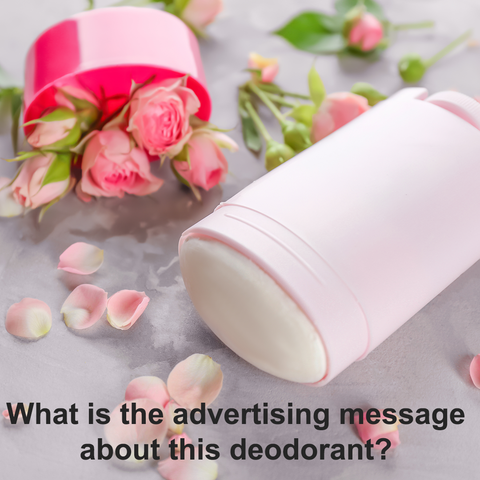 As consumers become aware of the potentially harmful ingredients in commercial antiperspirants and deodorants, more and more companies are beginning to offer “natural” options.
As consumers become aware of the potentially harmful ingredients in commercial antiperspirants and deodorants, more and more companies are beginning to offer “natural” options.
The goal of packaging or an advertising message is to convey an idea to the target audience.
The goal is to visually convince you to purchase something.
Sadly, companies have learned that simply changing the name or label by adding a few green leaves or flowers and some words that hint "natural" or "nature" will draw your attention. Their marketing claims often focus on "no added this" or "no added that" rather than the ingredients that are actually used in the product. Some natural deodorant companies are owned by large corporations, so be sure to read the ingredient lists.
Unfortunately, just because a company advertises terms like "all natural" or "organic" on its label or website it does not mean the ingredients will create a healthy environment for your underarms. Even in some "natural" deodorant you will find synthetic ingredients like fragrance oils and preservatives that can often cause irritation and should NOT be use in a deodorant that claims to be "natural".
If you are really looking for a natural deodorant, do not just rely on the label's claims.
I cannot stress enough how important it is to always read and research the ingredient label so you know what is actually inside the product to be sure it contains only the ingredients you are expecting, and not the ones you are trying to avoid. Become a deodorant detective!
You will often see articles about the evils of a natural baking soda deodorant. I believe that natural deodorants containing baking soda often get a bad rap. Although the ingredients in many natural deodorants may seem similar, each manufacturer has their own recipe, their own formulation for their natural deodorant. There are some natural deodorants that use too much baking soda and too little of the soothing and moisturizing ingredients.
We make two natural deodorants that contain baking soda, our Extra Strength Cream and our Stick deodorants. The Extra Strength Cream contains more baking soda. Our goal for both formulations was to find the perfect combination of ingredients and hit just the right concentration of baking soda along with a soft, smooth, non-gritty texture to keep odor at bay at bay without irritating skin in the vast majority of people.
 I am not going to get into all of the “evils” of the ingredients in commercial deodorants or antiperspirants--because we really don't understand many of these chemicals or know their long-term effects!
I am not going to get into all of the “evils” of the ingredients in commercial deodorants or antiperspirants--because we really don't understand many of these chemicals or know their long-term effects!
But when I began researching many of the ingredients found in some conventional deodorants (phthalates, fragrances, and parabens), I knew I could not continue to use them.
As I said above, it took me over a year of research, experimentation, and testing on friends, family, and our Chagrin Valley Team, before I finally came up with deodorant formulas that we loved.
We formulate our deodorants to help control odor, absorb perspiration, and treat your skin with healthy, moisturizing ingredients.
All I ask is that you read the ingredient comparison below and ask yourself one question, “What do you want to put on your skin?”
Ingredients in a popular commercial antiperspirant:
Active Ingredient: Aluminum Zirconium Tetrachlorohydrex GLY (18.5%).
Other Ingredients: Cyclopentasiloxane, dimethicone, C18-36 acid triglyceride, microcrystalline wax, silica, glycerin, fragrance (parfum), dimethicone cross polymer, sunflower oil, vegetable oil (olus), glyceryl oleate, propylene glycol, BHT, t-butyl hydroquinone, citric acid.
Ingredients in a Chagrin Valley Organic Stick Deodorant:
Organic Virgin Coconut Oil; Organic Virgin Shea Butter; Organic Cornstarch; Organic Beeswax; Organic Jojoba Oil; Baking Soda; Organic Essential Oils: Lemongrass and Tea Tree; Organic Rosemary Oil Extract
Remember your body chemistry is unique. What works for someone else may not work for you. Try each deodorant for a couple weeks, as it takes your body time to adjust.
What About Probiotic Deodorants?
While shopping for natural deodorants you may have seen some containing probiotics. They claim to use "good" bacteria to balance the natural microbiome of underarm skin which would help prevent odor. Since certain strains of bacteria tend to smell worse than others, the right balance of good bacteria might help decrease nasty underarm odor. It makes sense.
If you decide to try a probiotic deodorant be sure to do your research. What is actually listed in the ingredients? Several of the “probiotic” deodorants I found did not contain any actual "bacteria" in their ingredient list.
Does the deodorant contain preservatives? Since the purpose of preservatives is to prevent bacterial growth, how will preservatives affect the probiotic bacterial strains used in the product?
I also noticed that many of the probiotic deodorants simply listed the word "probiotics" in their ingredient list. But the type of probiotic bacteria used in the product is quite important.
Most of the probiotic deodorants available contain Lactobacillus acidophilus or other bacteria that are commonly found in the gut. Since these microorganisms do not occur naturally in the armpits how will they help balance the natural underarm microbiome?
Studies have demonstrated that skin care products, including deodorant, containing probiotics may not meet beneficial probiotic requirements. According to the article, Probiotics in Cosmetic and Personal Care Products: Trends and Challenges, published in 2021:
"There is no single healthy skin microbiome, so what would it take to ”balance” the one that a given individual possessed?"
They go on to say that our skin is made up of many layers each of which contains different natural microbes. Researchers believe that a product claiming to “balance” the skin microbiome needs to be researched to determine which, if any, probiotics used can restore and maintain a healthy skin microbiome for each unique individual.
"This is important because consumers like the sound of products that do that, especially since terms like the “microbiome” and “balance" are being used so widely."
We want to change the way you think about underarm deodorant!
You can be all-natural and odor-free at the same time!
To compare the differences in our three natural deodorant formulations, please read our "Help Me Choose A Natural Deodorant" page.
For information on the difference between deodorant and antiperspirants please read our blog "The Science of Sweat, Deodorant & Antiperspirants"
Browse our full range of natural and organic deodorants.
What's in YOUR deodorant?
Originally pubslished in 2017, this blog has been updated with new products and information.

The Science of Sweat & Deodorant
Transitioning to Natural Deodorant Part 1
Transitioning To Natural Deodorant Part 2
Antiperspirants & Breast Cancer: Part 1
Is There Aluminum In My Baking Soda?
